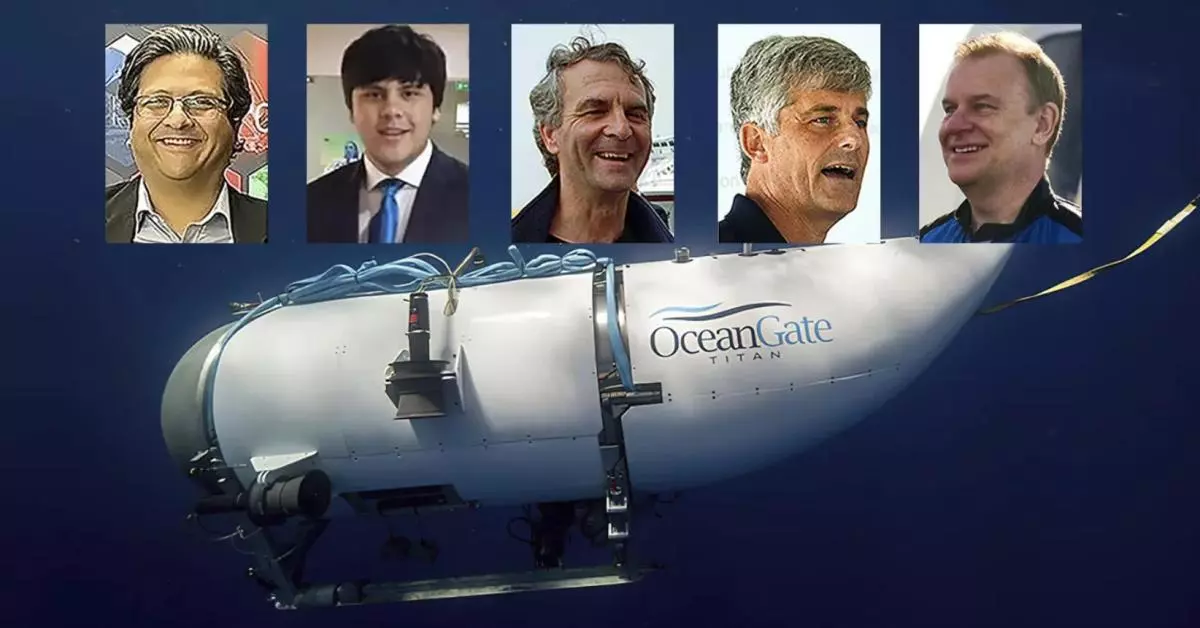In a devastating turn of events, the highly anticipated mission to explore the Titanic has ended in tragedy. The 22-foot submersible known as the Titan, which carried five men on board, has been found in outer parts near the site of the Titanic wreckage. Unfortunately, OceanGate, the company leading the mission, has confirmed that all five men on board the submersible have perished.
The news has sent shock waves through the explorer community, with OceanGate expressing their deep sorrow for the loss. In a statement, the company conveyed their condolences to the families of the victims and acknowledged the profound impact this event has had on the entire exploration community.
The debris found on the ocean floor, approximately 1,600 feet from the bow of the Titanic, suggests a catastrophic loss of the pressure chamber in the submersible. Rear Admiral John Mauger of the U.S. Coast Guard shared this information during a press conference, emphasizing that it is still too early to determine when the Titan imploded.
While the families of the five individuals on board have been notified, the recovery mission faces significant challenges. The U.S. Coast Guard officials have stated that remote operating vehicles (ROVs) will continue to operate on the sea floor around the Titanic, investigating the debris field. However, the recovery of the bodies remains uncertain due to the harsh and unforgiving nature of the deep-sea environment.
The submersible was discovered in a debris field near the Titanic after the submersible was expected to have depleted its oxygen supply. The Coast Guard, through extensive search efforts, managed to locate pieces of the Titan, including a landing frame and a rear cover of the vessel. The discovery was made by ROVs, showcasing the effectiveness of the multi-agency international effort involved in the search and rescue operation.
As the investigation continues, the focus remains on providing support and understanding to the grieving families. The Coast Guard official expressed the importance of offering closure and empathy to those affected during this challenging time.
The ill-fated journey of the Titan began on June 16 when the submersible and its support ship departed from St. John’s in Newfoundland, Canada. Two days later, the submersible commenced its dive to the Titanic, located approximately 370 miles off Newfoundland and resting at a depth of 12,500 feet in the North Atlantic Ocean. Tragically, communication between the submersible and the monitoring vessel, the Polar Prince, was lost about one hour and 45 minutes into the dive.
OceanGate had equipped the Titan with a 96-hour supply of oxygen, which should have sustained the occupants until Thursday morning. The Coast Guard took immediate action, leading a frantic rescue mission that involved U.S. and Canadian ships, aircraft, and other equipment. Despite the extensive search efforts, the mission ultimately ended in heartbreak.
The five men aboard the ill-fated submersible were notable figures in their respective fields, driven by their shared spirit of exploration and passion for protecting the world’s oceans. Among them was Stockton Rush, the CEO of OceanGate, who founded the company in 2009. Rush, also a co-founder of the OceanGate Foundation, aimed to utilize emerging marine technology to facilitate discoveries in marine science, history, and archaeology.
Hamish Harding, a British billionaire explorer and chairman of Action Aviation, joined the expedition. Known for his remarkable achievements in both deep-sea exploration and aviation, Harding held three Guinness World Records and had even ventured into space. In a Facebook post, he acknowledged the uniqueness of the mission due to the challenging winter conditions in Newfoundland, making it likely the first and only manned mission to the Titanic in 2023.
Another prominent member of the team was Paul-Henry Nargeolet, a French maritime expert and Titanic authority. With 37 successful dives to the Titanic wreckage, Nargeolet was widely regarded as a leading authority on the site. As the director of Underwater Research for E/M Group and RMS Titanic, Inc., he played a crucial role in supervising the recovery of thousands of artifacts.
Shahzada Dawood, a member of one of Pakistan’s most prominent families, and his son, Suleman Dawood, were also on board the Titan. Shahzada Dawood served on the boards of various organizations, including the Dawood Foundation, the SETI Institute, and Pakistani Engro Corporation. Suleman Dawood, just 19 years old, had a passion for science fiction, solving Rubik’s Cubes, and playing volleyball. The loss of these two individuals has deeply affected their families and communities.
The news of the submersible’s tragic fate has left many with a sense of disbelief and grief. Azmeh Dawood, Shahzada Dawood’s older sister, expressed her heartbreak over the loss, describing it as being trapped in a nightmarish film. The pain and difficulty of comprehending the events have been overwhelming for the families involved.
The Titan itself was an impressive vessel, owned by OceanGate Inc., a private company based in Washington. It measured 22 feet in length and weighed 25,000 pounds. Designed to accommodate a crew of five, the submersible had the capability to descend to depths of 13,123 feet into the ocean. Its construction featured a titanium crew compartment and a carbon fiber hull. Inside the submersible, there was a single toilet facility for the occupants.
Prior to the tragic incident, concerns had been raised about the safety of the group’s expeditions. Reports have emerged suggesting that there were previous questions regarding the security measures and operational protocols implemented by OceanGate. These concerns add further complexity to the investigation and may prompt a review of safety standards in future deep-sea exploration missions.
The loss of the Titan and the five men on board serves as a stark reminder of the inherent risks associated with venturing into the depths of the ocean. As the investigation continues, the focus remains on providing support to the families affected by this tragedy and learning from the incident to enhance safety measures in future deep-sea explorations. The global exploration community mourns the loss of these brave individuals who dedicated their lives to uncovering the mysteries of the deep ocean.

